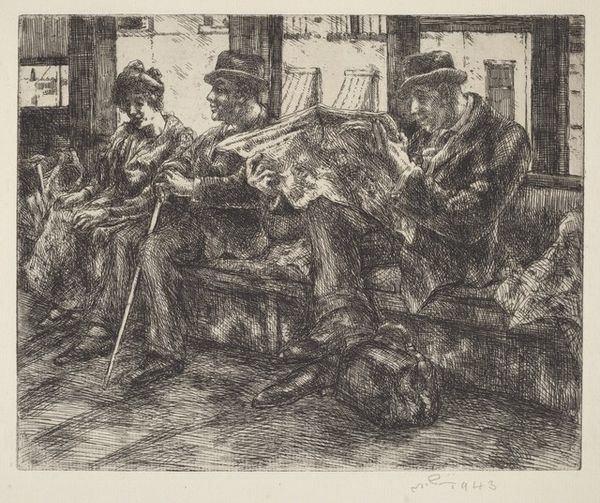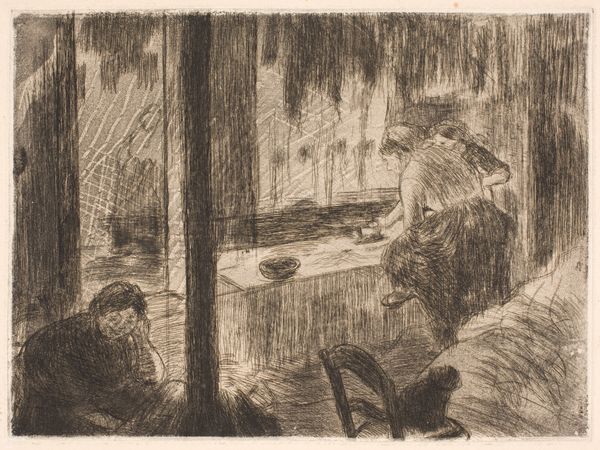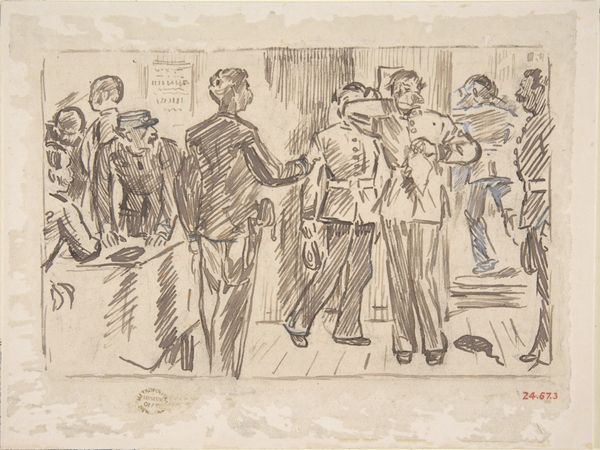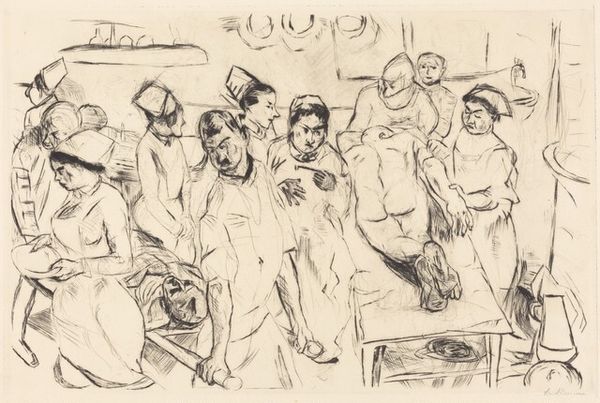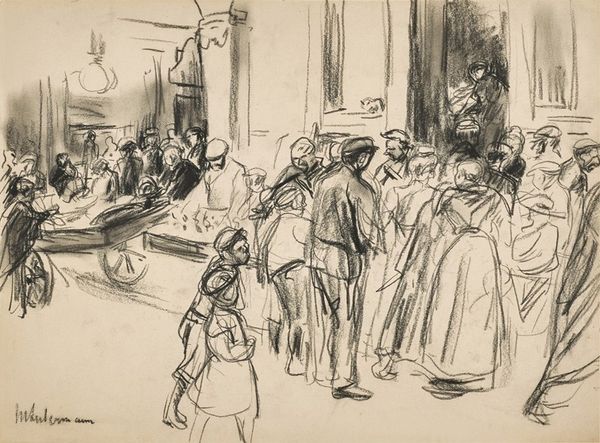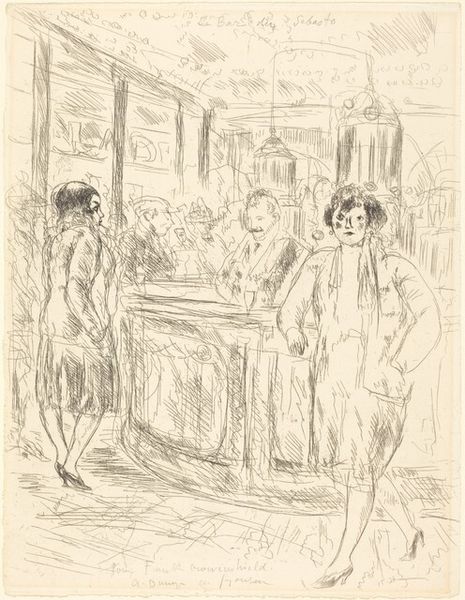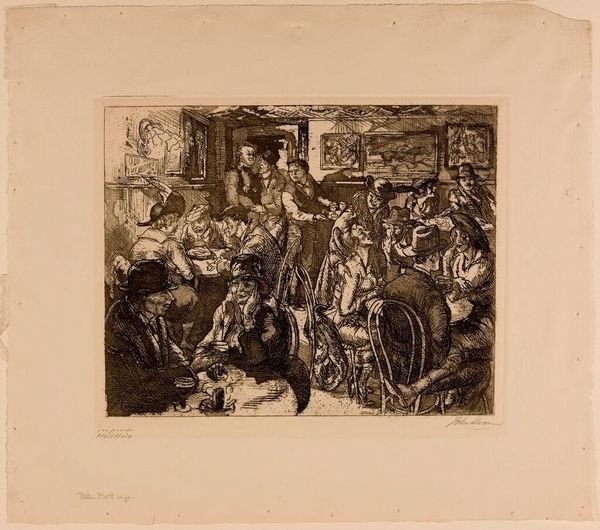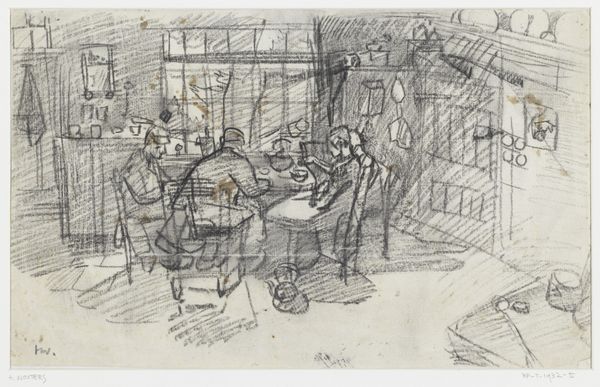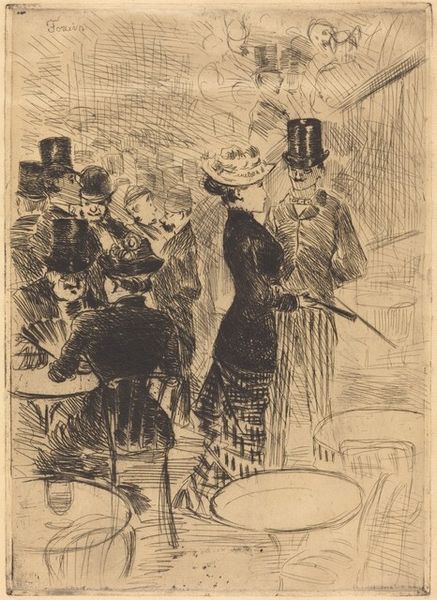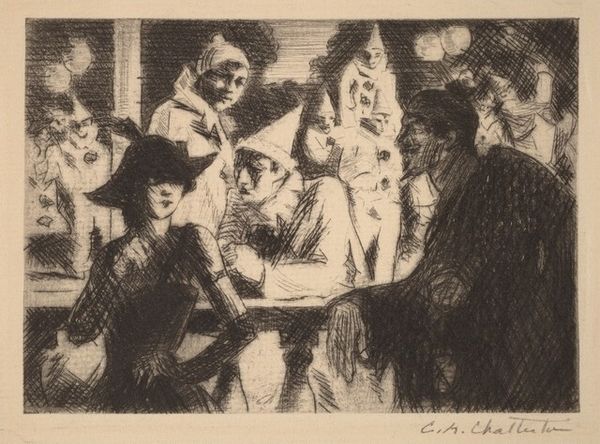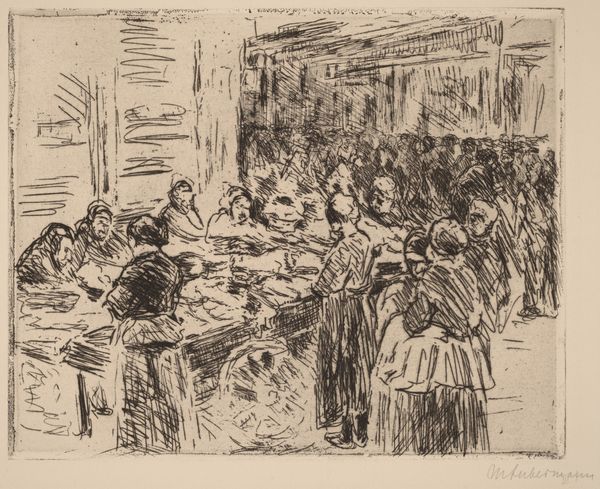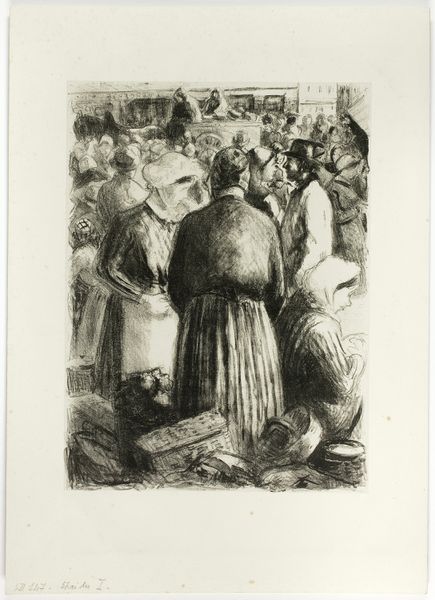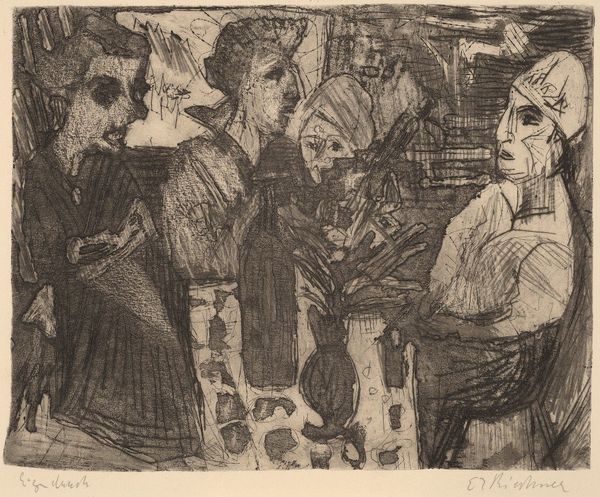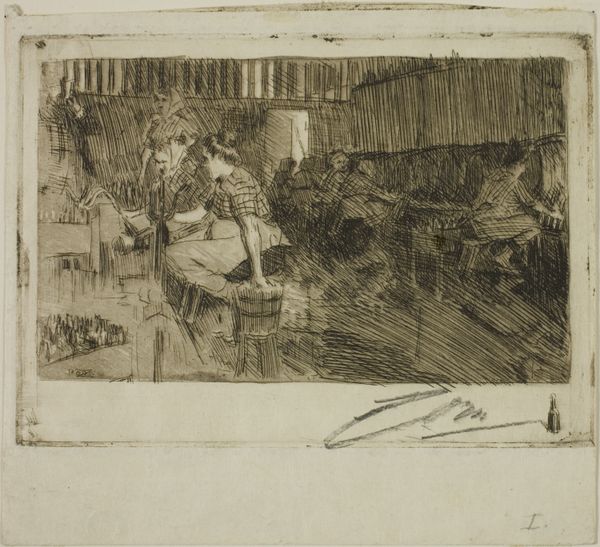
Marché à la Viande, New York (Meat Market, New York) 1908
0:00
0:00
Dimensions: plate: 11.3 x 14.3 cm (4 7/16 x 5 5/8 in.) sheet: 18 x 27.5 cm (7 1/16 x 10 13/16 in.)
Copyright: National Gallery of Art: CC0 1.0
Editor: This is Jean-Émile Laboureur’s etching, “Marché à la Viande, New York (Meat Market, New York)” from 1908. It's incredibly detailed, even at this scale, showing a bustling scene inside a butcher shop. The mood feels gritty and real. What catches your eye? Curator: The way Laboureur represents the labor and processes within this meat market is compelling. Note how the etches don't just describe form, but also evoke the repetitive actions: the slicing, the weighing, the displaying. It's not just a representation of the scene but of the labor that constitutes it. Look at the signage: "Phila Broilers," "Sliced Ham." It highlights the specific commodities and systems of exchange. What does the visible process suggest to you about class distinctions? Editor: I see what you mean. The clear descriptions and the variety of cuts indicate a developing culture of commodification, where everything, even meat, becomes sorted and marketed for consumption. The workers appear focused on these transactions. So the work ethic is reflected by each tiny scratch across the zinc? Curator: Exactly. Also, consider the choice of printmaking itself. Etchings, by their nature, are reproducible and accessible. Does that choice say something about Laboureur’s intention and desired audience? How does this accessible process impact who consumes this image versus a painted rendering of a butcher? Editor: Interesting point. Prints allow wider distribution. Making the artwork more democratic in some ways by portraying the everyday labor of ordinary people available to a wider market. Curator: Precisely! The material conditions of the art, from the etching process to the subject matter, reflect broader social and economic forces at play in early 20th-century New York. The process shapes its reception and meaning. Editor: That makes me rethink my initial impression. It's not just gritty, but it’s offering a commentary on the industry itself, right down to the medium used. Curator: Absolutely! It shows the power of considering art through the lens of its production and consumption. The meatpacking is like the artistic act--labor reflected as commodity.
Comments
No comments
Be the first to comment and join the conversation on the ultimate creative platform.
